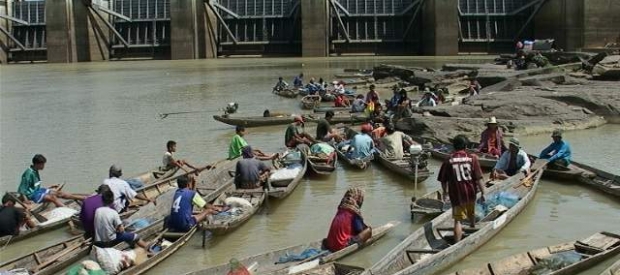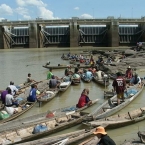Pak Mun Dam
The 136 MW Pak Mun Dam, which was completed in 1994, was built by the Electricity Generating Authority of Thailand with US$24 million in financing from the World Bank.
From the outset, the project was highly controversial due to the predicted impacts on the rich and productive fisheries of the Mun River, the largest tributary of the Mekong River. Between 1990 and 1997, there was intense opposition to the dam by thousands of people living in local communities along the Mun River.
As a direct result of the dam, more than 20,000 people have been affected by drastic reductions in fish populations upstream of the dam site, and other changes to their livelihoods. The dam has blocked the migration of fish, and a fish ladder, promoted by the World Bank’s fisheries experts as a mitigation measure, has proved useless.
International Rivers is working with Pak Mun villagers and the Assembly of the Poor to demand that the Pak Mun Dam be decommissioned and the river restored. On March 23, 1999, more than 5,000 villagers occupied the Pak Mun Dam site and established Ban Mae Mun Man Yuen No 1, the "Long–lasting Mun River Village No 1."
In a victory for villagers, the Thai government agreed to open the dam gates in June 2001 while studies were conducted on fisheries, social impacts and the impact of the dam on Thailand’s electricity supply. Completed by Ubon Ratchathani University, this study recommended opening the dam gates for five years. However, this recommendation was rejected by the government, which decided to close the gates for eight months each year and shut the gates in November 2002.







